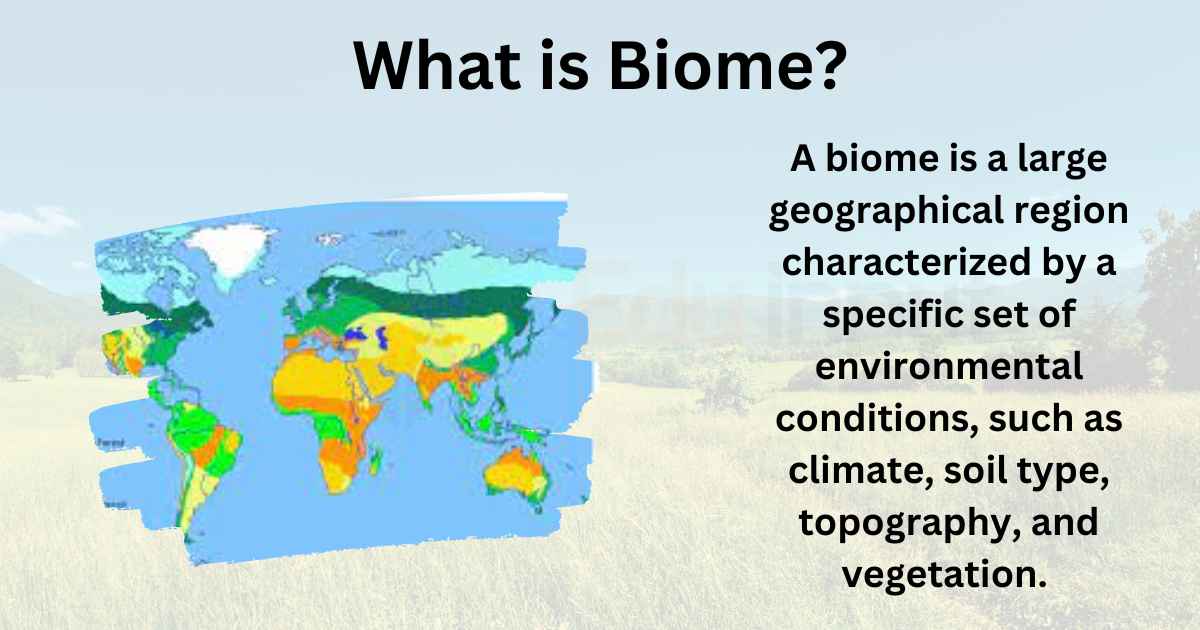What Is Biosphere? (Components, Types, Examples, and Importance)
The biosphere is a term used in Biology to describe the living organisms and their interactions with the environment. It is the portion of the surface of earth where life exists, from the depths of the ocean to the highest point of the atmosphere.
Characteristics of Biosphere
The term biosphere comes from the Greek words “bios” meaning life and “sphaira” meaning sphere. It refers to the part of the Earth’s surface and atmosphere where living organisms can be found.
The biosphere is characterized by its diversity of life forms, ranging from microorganisms to large mammals, and its interactions with the physical environment.
Components Of Biosphere
The biosphere is a complex system that consists of various interconnected components that work together to create a dynamic and balanced ecosystem.
It has following components:
Atmosphere
The atmosphere is the gaseous layer that surrounds the Earth, extending up to 10,000 kilometers from the surface. It consists of several layers, each with its own unique properties and characteristics.
The atmosphere supports life on Earth as it contains the gases that living organisms need to survive, including oxygen, nitrogen, and carbon dioxide. It provides protection from harmful radiation from the sun and cosmic rays.
Lithosphere
The lithosphere is the solid and outermost layer of the Earth’s crust. It consists of rocks, minerals, and soil. It is home to many living organisms, including plants and animals. The lithosphere supports life on Earth by providing a habitat for these organisms. It also supplies nutrients and minerals that are needed for growth and survival.
Hydrosphere
The hydrosphere includes all the water on Earth, including oceans, rivers, lakes, groundwater, and atmospheric moisture. It is an essential component of the biosphere, providing a habitat for aquatic organisms and supporting the growth of plants and animals on land.
The hydrosphere regulates the Earth’s climate by absorbing and releasing heat. It transport nutrients and other important substances around the planet.
Types of Biosphere
The biosphere is the part of the Earth’s surface and atmosphere where living organisms can be found. It is a complex and interconnected web of life, ranging from the depths of the ocean to the highest point of the atmosphere.
Terrestrial Biospheres
Terrestrial biospheres are found on land and include forests, grasslands, deserts, and tundras. These ecosystems are characterized by their unique climate, soil, and vegetation, and they support a wide range of plant and animal species.
Terrestrial biospheres cover about 29% of the Earth’s surface and are essential for the survival of many species, including humans.
Forest ecosystems are the most diverse terrestrial biospheres. They are home to more than half of the world’s species.
While tropical rainforests are characterized by their high humidity and rainfall, and they support a wide range of plant and animal species, including monkeys, parrots, and jaguars.
Grasslands are characterized by their low rainfall and support a unique set of species, such as bison, antelopes, and prairie dogs.
Deserts are characterized by their aridity and extreme temperatures and are home to species that are adapted to survive in these harsh conditions, such as cacti, snakes, and lizards. Tundras are found in the polar regions and are characterized by their cold temperatures and short growing season, and they support species such as polar bears, reindeer, and Arctic foxes.
Aquatic Biospheres
Aquatic biospheres are found in water bodies such as oceans, rivers, and lakes. They cover about 71% of the Earth’s surface and are essential for the survival of many species, including fish, whales, and dolphins.
Aquatic ecosystems show their unique water chemistry, temperature, and flow. They support a wide range of plant and animal species.
Ocean ecosystems are the most diverse aquatic biospheres and are home to more than 200,000 species, including whales, sharks, and turtles. They have high salt content, temperature, and currents.
Freshwater ecosystems have low salt content. It include rivers, lakes, and wetlands. They support a wide range of species, such as salmon, trout, and ducks.
Atmospheric Biospheres
Atmospheric biospheres are found in the Earth’s atmosphere and include airborne microorganisms, such as bacteria and fungi, as well as larger organisms such as birds and insects.
These ecosystems are important for the survival of many species, including plants, animals, and humans. Atmospheric biospheres are characterized by their unique air composition, temperature, and pressure.
Examples of Biosphere
- Amazon Rainforest – largest and most biodiverse terrestrial biosphere on Earth.
- Great Barrier Reef – largest and most diverse aquatic biosphere on Earth.
- Antarctica – unique biosphere characterized by extreme cold temperatures.
- Atmospheric Biosphere – unique ecosystem that includes airborne microorganisms, birds, and insects.
Importance of Biosphere
The biosphere is important for the survival of life on Earth, regulating the climate, providing resources, and inspiring people around the world.
They:
- Supports Life
- Regulates Climate
- Provides Resources
The biosphere is the only known place in the universe where life exists, providing food, water, and oxygen to all living organisms.
It plays a critical role in regulating the Earth’s climate through the carbon cycle, preventing catastrophic climate change.
It is a source of important resources such as food, water, and natural medicines like aspirin.
What does biosphere mean?
Biosphere refers to the zone of the Earth’s surface and atmosphere where living organisms exist.
Why is the biosphere important for living organisms?
The biosphere provides essential resources such as food, water, and oxygen for living organisms. It also regulates the Earth’s climate and plays a crucial role in the carbon cycle.
Why earth is called biosphere?
Earth is called the biosphere because it is the only known planet that has a zone where living organisms exist. This zone includes the Earth’s surface and atmosphere.
Why biosphere is absent on moon?
The biosphere is absent on the moon because it lacks the necessary conditions for life, such as an atmosphere, water, and a stable temperature range.
Why the existence of decomposers is essential in a biosphere?
Decomposers play a critical role in the biosphere by breaking down dead organisms and recycling nutrients back into the ecosystem. This process is essential for maintaining the balance of nutrients in the biosphere.
Why is the biosphere necessary for the carbon cycle?
The biosphere plays a critical role in the carbon cycle by absorbing and releasing carbon dioxide and other greenhouse gases. This process helps to regulate the Earth’s temperature and prevent catastrophic climate change.
Why is it called biosphere?
The term biosphere comes from the Greek words “bios,” meaning life, and “sphaira,” meaning sphere or globe. It refers to the zone of the Earth’s surface and atmosphere where living organisms exists.

 written by
written by 





Leave a Reply